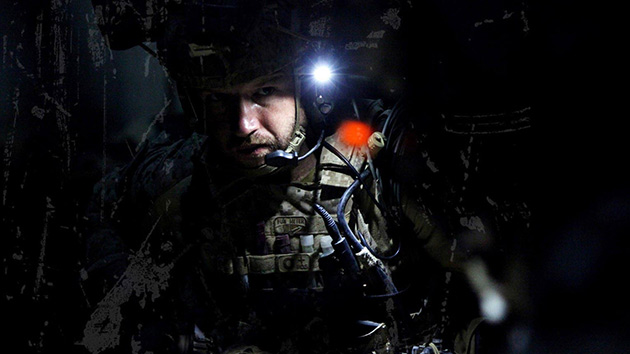With awards season running at full throttle, much ink has been spilled about the political implications of Zero Dark Thirty. The controversy has nearly overshadowed director Kathryn Bigelow's pulse-quickening achievement in translating the boots-on-the-ground details of the CIA's long-running manhunt for Osama Bin Laden to the screen. The press and punditry will continue to dissect the film's attitude toward torture. Meanwhile, we dug into some of the behind-the-scenes details of the film's making that have been released in various outlets to pull out some nuggets about how Bigelow's crew pulled off the immense feat of principal photography.
1. Director Kathryn Bigelow and cinematographer Greig Fraser chose the ARRI Alexa because of demanding low-light conditions in the film's climactic raid sequence. "It was a very specific decision, driven in part by the need to capture the low light of the raid in Abbottabad," Bigelow said. "The cameras are wonderfully sensitive to light, so we were able to utilize the softest, dimmest light source possible, allowing us to more accurately simulate a moonless night." [1]
2. ARRIRAW data was recorded to Codex Onboard M recorders.
[2]
3. For scenes when the camera crews were working handheld, Codex recorders and other accessories were mounted on special backpacks given to the camera assistants by Digilab Services. Digilab also redesigned the Codex Datapacks, modding them to replace their aluminum shells with lightweight injection-molded plastic.
[2]
4. The brand-new LTFS tape offloader module from Codex was used to archive the 276 hours of footage gathered during the shoot to LTO-5 tape.
[2]
5. Dailies were graded using the ACES color pipeline, and DNxHD MXF media was rendered out for editorial.
[2]
6. Cinematographer Greig Fraser and production designer Jeremy Hindle were close personal friends, making collaboration quick and easy. “Every time there was a shot that looked like it was a reference to another movie, Greig and I would look at each other and say, ‘Oh God, we shouldn’t do that,’" Hindle explains, "so we’d change it to look a little less familiar, and strip it back to be as bare and natural as possible.”
[1]
7. Shooting in Chandigarh, India, was difficult because of huge crowds gathered to watch the Western filmmakers. "We found that one way to solve this was to distract a crowd with 'fake shoots,'" said producer and screenwriter Mark Boal, "including one where we had one of our grips dancing, while we got the actual shot we needed elsewhere."
[1]
8. Even though the stealth helicopters used in the film's climactic sequence were CG, VFX supervisor Chris Harvey recommended shooting real Jordanian Black Hawk helicopters first to capture the motion of a real helicopter in flight as well as the interaction with dust in the environment.
[3]
9. The visual development team at Framestore built 3D models of Osama Bin Laden's secret Abbottabad compound for Hindle before the production-design team dug in and spent three months building a full-scale replica of the compound out of aged cinder block. "We had to build the compound so that it could withstand real Black Hawk helicopters flying right down on it, so we built the structure on six-to-nine-foot caissons underground," said Hindle.
[1],
[4]
10. Most of the raid was shot twice — once night-for-night, and a second time with a "night vision" lighting scheme that sought to replicate what the SEALs would have seen during the actual event. “We did that by wiring up a series of infrared lights, and then making them film-friendly. This turned out to be pretty accurate to what SEALs see because they also have mounted infra-red lights,” said Fraser.
[1]
[1] Zero Dark Thirty production notes (not available online)

